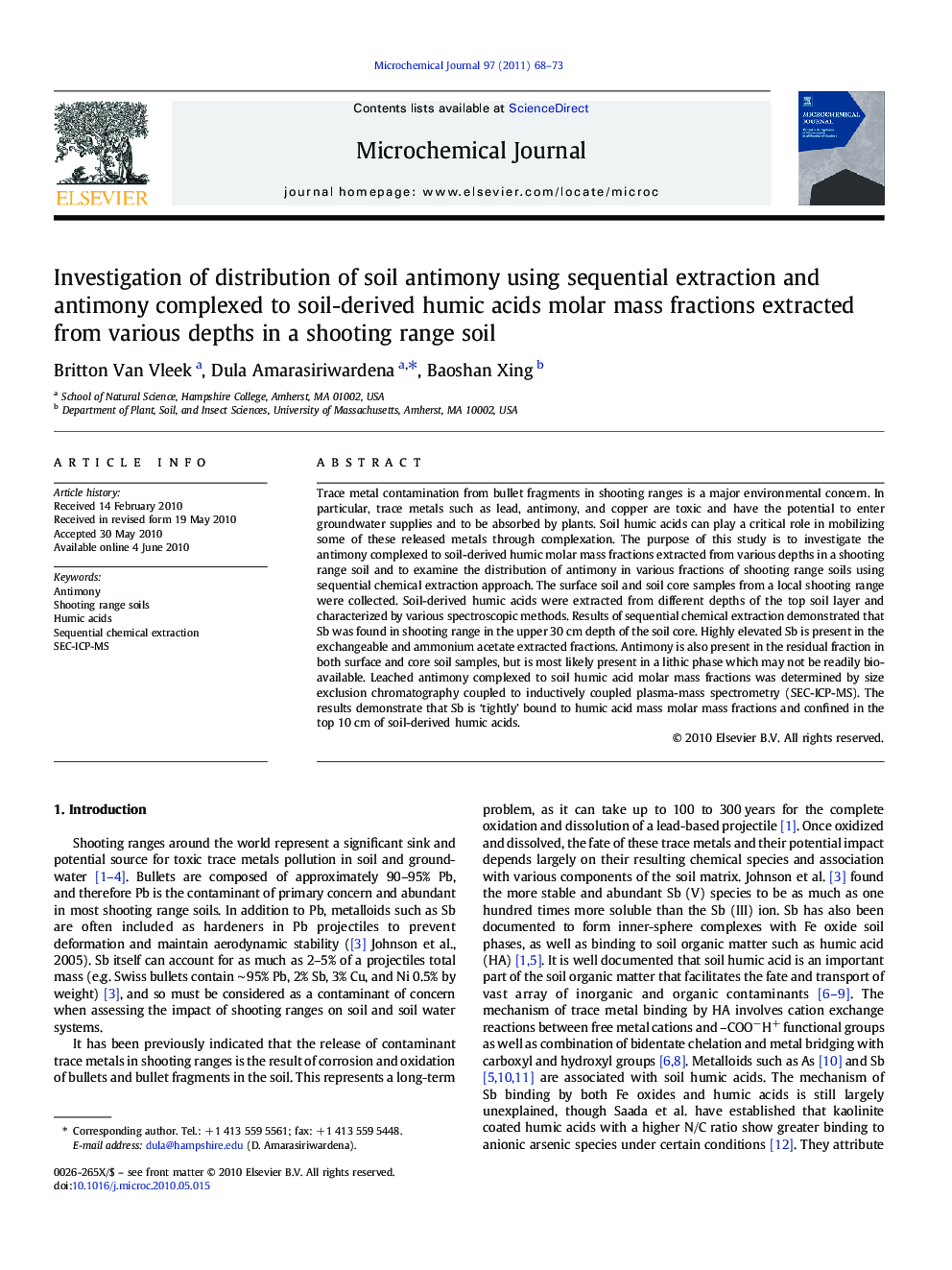| Article ID | Journal | Published Year | Pages | File Type |
|---|---|---|---|---|
| 1228249 | Microchemical Journal | 2011 | 6 Pages |
Trace metal contamination from bullet fragments in shooting ranges is a major environmental concern. In particular, trace metals such as lead, antimony, and copper are toxic and have the potential to enter groundwater supplies and to be absorbed by plants. Soil humic acids can play a critical role in mobilizing some of these released metals through complexation. The purpose of this study is to investigate the antimony complexed to soil-derived humic molar mass fractions extracted from various depths in a shooting range soil and to examine the distribution of antimony in various fractions of shooting range soils using sequential chemical extraction approach. The surface soil and soil core samples from a local shooting range were collected. Soil-derived humic acids were extracted from different depths of the top soil layer and characterized by various spectroscopic methods. Results of sequential chemical extraction demonstrated that Sb was found in shooting range in the upper 30 cm depth of the soil core. Highly elevated Sb is present in the exchangeable and ammonium acetate extracted fractions. Antimony is also present in the residual fraction in both surface and core soil samples, but is most likely present in a lithic phase which may not be readily bio-available. Leached antimony complexed to soil humic acid molar mass fractions was determined by size exclusion chromatography coupled to inductively coupled plasma-mass spectrometry (SEC-ICP-MS). The results demonstrate that Sb is ‘tightly’ bound to humic acid mass molar mass fractions and confined in the top 10 cm of soil-derived humic acids.
